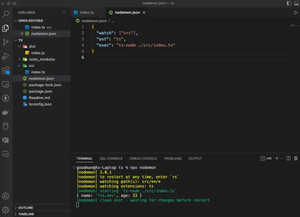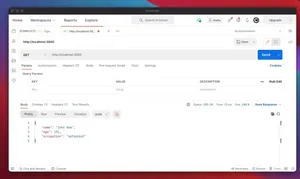Introduction
Sequelize is a popular promise-based Node.js ORM for Postgres, MySQL, MariaDB, SQLite, and Microsoft SQL Server. It features solid transaction support, relations, eager and lazy loading, read replication and more. One crucial aspect of using Sequelize is model synchronization, which refers to the process of aligning the model definitions in your code with the corresponding database schemas. In this tutorial, we will explore the concept of model synchronization in Sequelize and provide multiple code examples to illustrate its usage from basic to advanced scenarios.
Understanding Sequelize Models
Before diving into synchronization, it’s important to understand what models are in the context of Sequelize. Models in Sequelize are the representation of database tables. They are JavaScript classes that you define in your code, and they map to a table within your database. After defining a model, Sequelize can use it to create, query, update, and delete records in the corresponding table.
Basic Usage of Model Synchronization
To synchronize a model with the database, you use the sync() method. Here is a basic Sequelize setup:
const Sequelize = require('sequelize');
const sequelize = new Sequelize('database', 'username', 'password', {
dialect: 'mysql'
});
// Define a model
class User extends Sequelize.Model {}
User.init({
username: Sequelize.STRING,
birthday: Sequelize.DATE
}, { sequelize, modelName: 'user' });
// Synchronize the model with the database
User.sync().then(() => {
console.log('User table created successfully!');
}).catch((error) => {
console.log('Error creating the User table:', error);
});
This will ensure that a table corresponding to the ‘User’ model is created in the database if it doesn’t already exist.
Handling Model Changes
One of the challenges of working with databases is handling schema changes over time. Sequelize’s model synchronization can help with this. However, using sync() with the { force: true } option will drop the table if it exists before creating it again:
User.sync({ force: true }).then(() => {
// This will drop the table and recreate it
console.log('Table recreated');
});
This is not ideal for production databases as it would result in data loss. Hence, for evolving schemas, migrations are a more suitable option. Migrations are scripts that help you to safely migrate your existing database schema to a new version.
Advanced Synchronization Strategies
For more advanced scenarios, you might want to only apply specific changes to the database schema without affecting the existing data. Sequelize offers two methods to achieve this: Model.sync() with the { alter: true } option, and Model.sync() with the { updateOnDuplicate: ['field1', 'field2', ...] } argument for bulk inserts that require update on duplicate key encounters:
// Alter tables to fit the model definition
User.sync({ alter: true }).then(() => {
console.log('User table altered to fit model definition.');
});
// Insert or update on duplicate key
User.bulkCreate(users, {
updateOnDuplicate: ['username', 'birthday']
})
.then(() => {
console.log('Records are updated or inserted successfully.');
});
The { alter: true } option alters the existing table to fit the new model definition without dropping the table.
Conclusion
To conclude, model synchronization in Sequelize is a powerful feature that helps developers maintain their database schemas efficiently. While the sync() method is suitable for initial development or testing environments, migrations should be used for managing changes in production databases. When used properly, Sequelize synchronization helps keep your application’s data model clean and in sync with your code, paving the way for a more stable and scalable application.

